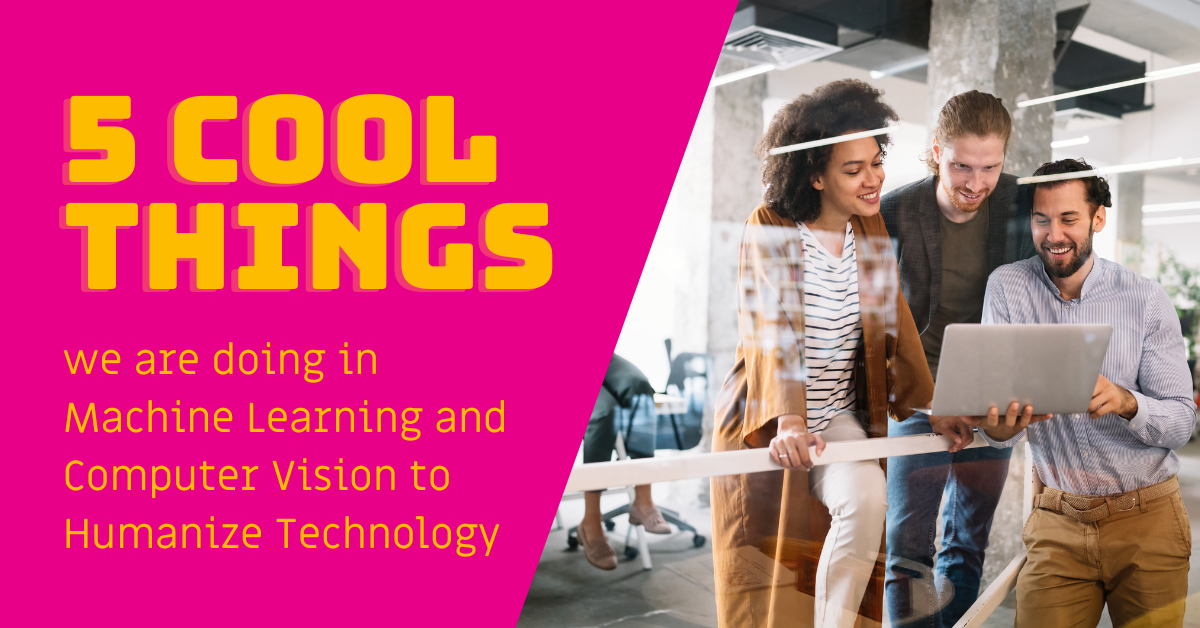By: Rana el Kaliouby, Co-Founder and Chief Strategy and Science Officer
When I was a PhD student at Cambridge University, and then later a Research Scientist at MIT Media Lab, I always thought that academia is strictly where innovation happens and where breakthroughs in science and technology take place, while business and industry is where you merely apply these innovations.
I LOVE doing research and so this misbelief was one of the main reasons I wanted to stay in academia. When I started Affectiva, I thought that would be the end of my research career. Over the past 5 years at Affectiva, I learned I was very wrong.
At Affectiva, we are continuously pushing the boundaries. We are innovating in a number of disciplines including machine learning, computer vision, data science, emotion science and most importantly, in affective computing – a field of computing that is about building technology that can read and respond to one’s emotions. Innovation is one of our core values as a company, and we strive to make it part of our everyday culture at Affectiva. Also, perhaps because of our MIT heritage, we have a philosophy of openness, transparency, and sharing with the academic community. Our team routinely publishes in top-tier peer- reviewed journals and we are often on stage talking about our science. You can find some of our papers here.
Here are 5 ways we are pushing the boundaries:
1- CREATING MASSIVE DATASETS THAT NEVER EXISTED BEFORE
Anyone in the fields of machine learning, computer vision or data science knows that data is king. Having access to data, and lots of it, is critical to the accuracy and robustness of our emotion classifiers. At Affectiva, we have amassed over 3.2 million face videos – that’s about 12 billion facial frames. It would take years and years to collect a similar database in academia and would cost a fortune. We actually get paid to collect this data through the work we do with our clients and partners. Because of our deep roots in academia and our commitment to advancing research and science, we have shared a subset of this data publicly — anyone can request access at no charge here. So far, the database has been downloaded by more than 70 academic institutions.
2- ENABLING ACCESS TO REAL-WORLD, GLOBAL DATA
But it’s not just the quantity that matters, it’s the quality of it. Consider an example where you train an algorithm to recognize apples, but only give it examples of red apples. When you present the algorithm with a green apple, it may not recognize it as an apple. The more varied your training set, the more accurate your algorithm is. At Affectiva, our data spans over 75 countries and all sorts of ethnicities, age ranges and types of expressions, big ones and subtle ones. The database includes expressions that were captured in optimal lighting conditions with high quality cameras, but many that were not. We use a subset of this massive emotion database to train and test our classifiers. By always adding more “difficult” real world data, we can continuously boost our accuracy and ensure our software works supremely well when we enter new markets with new use cases.
3- MINING A TREASURE TROVE OF INSIGHTS
But, at the end of the day what really matters, is what you do with this data: how you can make it actionable. We use this emotion data repository to create norms, benchmarks and emotion analytics. In media and advertising–Affectiva’s first market–our clients include a third of the Fortune 500 companies. We create advertising norms so our clients could benchmark and test their content against those of their competition. The norms are segmented by market, geography, product category and more. Marketers then use this data to make business decisions such as media spend and targeting. With this unique emotion database we are sitting on a gold mine of insight. This is unprecedented data the world has never seen before. When we mine this data the findings are fascinating, as we can now better understand human emotional behavior in a digital world. We can also see how this behavior varies, by gender, culture and geography. We are just beginning to scratch the surface on this, but we are already getting many interesting insights. More about that in another blog, but have a look at my recent TEDTalk if you want to see a few examples.
4- DISRUPTING EXISTING MARKETS AND CREATING NEW ONES
In my PhD dissertation, I outlined several areas where affective computing can be applied. It’s a long list that includes potential applications in fields such as: Online education, healthcare, and the automotive industry. When we first spun out of MIT, our first product roadmap had us nailing one new market every quarter. Of course, in retrospect, that was very naive. What I’ve learned at Affectiva is that bringing these ideas to market, thereby disrupting existing ones and creating totally new ones, requires a lot of innovation. For example, we knew that enabling our technology to run on mobile was key to many if not all of our potential markets. But that had implications on the computational and memory footprint of our algorithms. Our team had to think creatively to “shrink” our algorithms so that they can be lightweight enough to run on mobile devices, and do so in real-time.

This image shows many of the different markets where Affectiva’s emotion sensing and analytics technology adds value.
5- PARTNERING TO EXPAND OUR INNOVATION FOOTPRINT
Our vision is to bring emotional intelligence to the digital world. We do this by 1) providing insights and analytics on how humans respond emotionally to digital content and 2) allowing others to emotion-enable their tech. We realized that as a start-up with a horizontal solution that adds value in many markets, we cannot possibly build all these solutions ourselves. For that reason we have packaged up our technology in a Software Development Kit (SDK) and APIs that others can license so that they can add emotion sensing and analytics to their products, be it a mobile app, digital experience, game, or business application. With our SDKs we are now able to get our technology to market in new and exciting ways, thereby expanding our innovation footprint. And the best part about this approach? We get to showcase great examples of how others are emotion-enabling their experiences with our technology. True Car has used our SDK to create a state-of-the-artsensory display using 70,000 LEDs for a concert series this summer, providing concert goers with a unique experience. In the video communication and gaming space, ooVoo has createdFlinch, an emotion-powered mobile staring game. WildBlue Technologies developed theHershey Smile Sampler, a unique retail shopper experience powered by Affectiva. By the way, you too can try a free eval of this SDK!
When I co-founded Affectiva, I never expected to continue to innovate and do research. But that’s exactly how it has played out. I loved every minute spent in academic research, but now that the door into business has been opened I’m sold: I am a high tech entrepreneur who every single day hopes to make the world a better place through technology innovation.





